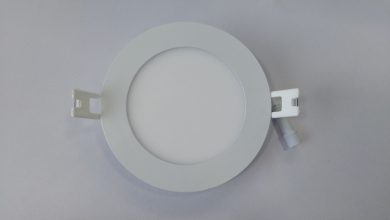GPON vs. EPON: Exploring the Clash of Fiber Optic Titans
GPON vs. EPON: Exploring the Clash of Fiber Optic Titans

In the world of fiber optic networking, two prominent technologies stand out: Gigabit Passive Optical Network (GPON) and Ethernet Passive Optical Network (EPON). These two titans of fiber optic communication offer high-speed internet connectivity and are widely used in various applications. Let’s delve deeper into the clash between GPON and EPON to understand their differences, similarities, and the factors to consider when choosing between them.
Introduction to Fiber Optic Technology
gpon vs epon Fiber optic technology revolutionized the way data is transmitted over networks. Unlike traditional copper wires, fiber optics use light to carry information, resulting in faster speeds, higher bandwidth, and more reliable connections. This technology plays a crucial role in modern telecommunications, enabling high-speed internet access, voice communication, and video streaming.
Overview of GPON
GPON, short for Gigabit Passive Optical Network, is a type of fiber optic technology widely used in telecommunications networks. In a GPON system, a single optical fiber is used to serve multiple users, making it a cost-effective solution for delivering high-speed internet access to residential and business customers. GPON offers symmetrical speeds of up to 2.5 Gbps downstream and 1.25 Gbps upstream, making it suitable for bandwidth-intensive applications such as video conferencing and online gaming.
Overview of EPON
EPON, or Ethernet Passive Optical Network, is another popular fiber optic technology that utilizes Ethernet protocol for data transmission. Similar to GPON, EPON also allows for the sharing of a single optical fiber among multiple users. EPON offers symmetrical speeds of up to 1 Gbps, making it suitable for residential and small to medium-sized business applications. EPON is known for its simplicity, scalability, and compatibility with existing Ethernet-based networks.
Differences Between GPON and EPON
While both GPON and EPON serve the same purpose of delivering high-speed internet access over fiber optic networks, there are several key differences between the two technologies.
Technical Differences
GPON and EPON differ in their underlying technologies and protocols. GPON uses an Optical Line Terminal (OLT) to manage the network and Optical Network Units (ONUs) to connect individual users. EPON, on the other hand, uses an Ethernet switch to manage the network and Ethernet Optical Network Units (EONUs) for user connections.
Speed and Bandwidth Comparison
GPON typically offers higher downstream and upstream speeds compared to EPON. While GPON can provide symmetrical speeds of up to 2.5 Gbps downstream and 1.25 Gbps upstream, EPON usually offers symmetrical speeds of up to 1 Gbps.
Cost Considerations
In terms of cost, EPON is often considered more affordable than GPON, especially for smaller deployments. However, the overall cost may vary depending on factors such as equipment prices, installation costs, and maintenance expenses.
Scalability and Flexibility
GPON and EPON also differ in terms of scalability and flexibility. GPON networks are generally more scalable and can support a larger number of users over longer distances. EPON, on the other hand, may be more suitable for smaller deployments or environments with limited space.
GPON vs. EPON: Performance Comparison
When comparing the performance of GPON and EPON, several factors come into play, including upstream and downstream speeds, latency, and Quality of Service (QoS).
Upstream and Downstream Performance
GPON typically offers higher upstream and downstream speeds compared to EPON, making it suitable for bandwidth-intensive applications such as video streaming and online gaming.
Latency Comparison
Latency refers to the delay in data transmission between the sender and receiver. While both GPON and EPON offer low latency, GPON may have a slight edge in this aspect due to its higher speeds and more efficient protocol.
Quality of Service (QoS) Considerations
QoS refers to the ability of a network to prioritize certain types of traffic over others. Both GPON and EPON support QoS mechanisms, but GPON may offer more advanced features for managing bandwidth and ensuring a consistent user experience.
Deployment Considerations
When choosing between GPON and EPON, several deployment considerations should be taken into account, including geographic factors, infrastructure requirements, and compatibility with existing networks.
Geographic Considerations
GPON and EPON may have different deployment requirements based on factors such as terrain, climate, and population density. GPON networks are often preferred for rural areas or locations with dispersed populations, while EPON may be more suitable for urban environments with high-density buildings.
Infrastructure Requirements
The deployment of GPON and EPON networks requires different types of equipment and infrastructure. GPON networks typically require specialized OLTs and ONUs, while EPON networks may use standard Ethernet switches and EONUs.
Compatibility with Existing Networks
When upgrading or expanding an existing network, compatibility with existing infrastructure is a crucial factor to consider. Both GPON and EPON offer backward compatibility with Ethernet-based networks, but GPON may require additional equipment or modifications for seamless integration.
Future Trends and Developments
As technology continues to evolve, both GPON and EPON are expected to undergo further advancements and developments.
Advancements in GPON Technology
GPON technology is continuously improving, with vendors introducing new features and enhancements to increase speeds, improve reliability, and reduce costs. Future developments may include higher-speed GPON variants, improved power efficiency, and enhanced management capabilities.
Emerging Trends in EPON Deployment
EPON deployment is also seeing growth, particularly in regions where cost-effective solutions are preferred. Emerging trends in EPON deployment include increased adoption in residential and business applications, deployment in smart cities and IoT networks, and integration with emerging technologies such as 5G and cloud computing.
Conclusion
In conclusion, both GPON and EPON offer high-speed internet connectivity over fiber optic networks, but they differ in terms of technology, performance, and deployment considerations. When choosing between GPON and EPON, it’s essential to consider factors such as speed requirements, cost considerations, scalability, and compatibility with existing infrastructure. Ultimately, the decision should be based on the specific needs and objectives of the network deployment.








